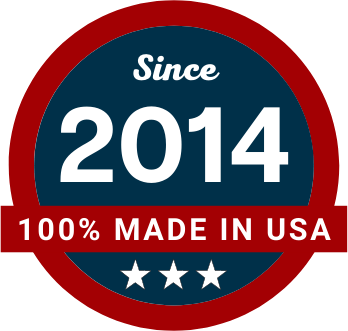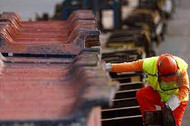How Will Copper Tariffs Affect Wire and Cable Prices?
Published by Mike Sobol on 11th Aug 2025
Our retail prices are down an average of 2.2% since January of this year. Yes, really. Despite headlines about tariffs and the general consensus that costs of all kinds are through the roof, we just aren’t seeing that in our numbers.
So, to answer the question posed in the headline: unless there is a major unexpected development (and that’s always possible), we’re expecting stable wire and cable prices in the near term, even with new tariffs on copper imports. Fingers crossed, prices on some product lines may even come down further, given copper’s recent drop in price.
Of course, projecting stable prices is easy to do. Being certain is another issue entirely. No one can predict the future with absolute certainty, as the copper futures market proved in July, shooting up to new record highs with talk of tariffs, then dropping dramatically just over a week ago when the actual tariffs were announced. What’s going on?
How Copper Prices Affect Wire and Cable Prices
Copper is the key component in the vast majority of wires and cables on the market. While specific percentages vary greatly depending on the type of product, its gauge, and its intended application, the copper conductor can represent anywhere from 10% to 80% (or more) of the total material cost in a given wire or cable.
For example, a huge 750 MCM copper cable will have a much greater percent of its weight made up of copper than say a tiny 22 AWG shielded multi-conductor cable.
The insulation and jacket materials, while essential for safety and performance, cost far less per unit to source and incorporate into an end product. So in the case of large cables, the copper cost represents a substantial ratio of all input costs.
The smaller and more complex a cable is, the greater the share of other inputs, including not just insulation and jacket, but also shielding, fillers and added labor to assemble. That being said, copper still rules.
Manufacturers routinely use the price of copper (and their expectations for future prices) as a shorthand way of adjusting prices on a monthly, weekly, and even daily basis. On rare occasions, like in July when copper prices were shooting skyward, at least one manufacturer updated their wholesale prices twice in the same day! Thankfully, that was a short-lived episode.
In the post-Covid era, when it seemed the whole economy turned back on at once, every single input cost more due to sudden demand and not enough supply of anything, all around the world. We’re still experiencing the higher prices that started a few years ago, but we don’t anticipate that kind of rapid inflation repeating any time soon. (Again: fingers crossed!)
Won’t 50% Copper Tariffs Increase Wire and Cable Prices?
It's reasonable to think so. While nearly all of the items we sell are made in the US, not all of the raw or refined materials used to make them start in the US. As a country, we consume more copper than we produce, which means we have to import about 500,000 metric tons of copper, or 45% of our total annual consumption. Consequently, if US manufacturers and wholesalers source nearly half of their copper from outside the US, and those imports suddenly sport a 50% tariff, that would directly increase manufacturing costs and wholesale prices.
There is not enough margin available to absorb those increases from anyone at any point in the supply change. Nor can we simply expand mining and smelting capacity in the US to make up that shortfall and avoid the tariffs.
Tariff Exemptions to the Rescue!
After the initial assumption that tariffs would increase copper prices (therefore driving up prices), when the details of the copper tariffs were released, the administration announced exemptions for various forms of copper inputs used to make wire and cable.
That announcement seems to have triggered the largest single drop in copper prices in 40 years. Why such a huge drop happened is anyone's guess. But it’s good news for all of us… for now. We have known for a long time that there are cheaper imported wire and cable products sold in the US. If those products are now more expensive, that's good for US manufacturers, because it means they don't have to compete with low prices they can't match. However, that also means they don't have to stretch to get their prices lower. Might retail prices then increase? Time will tell.
Despite all the hubbub, our prices have moved lower this year. And with any luck, they’ll stay that way for at least a little while.
To read the White House's fact sheet on copper tariffs, click here.







